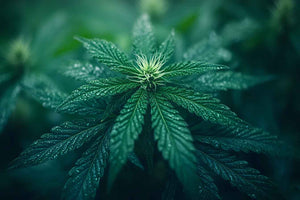
Cultivating cannabis might seem straightforward, yet it can also be quite intricate. This discussion focuses on the importance of watering in cannabis growth and the issues that arise from overwatering.
Both overwatering and underwatering cannabis plants can lead to a range of symptoms and potentially slow their growth. The key is to understand your plants' needs and find the right balance. In this text, we delve into identifying and addressing these challenges.
Successful cannabis cultivation relies on various factors such as light, nutrients, airflow, and humidity, all crucial for optimal growth and plant health. Nonetheless, water is a fundamental element for maintaining strong and healthy cannabis plants.
Watering isn't always as simple as it seems. Many growers believe that thoroughly soaking their plants daily is sufficient to meet their water requirements.
However, there are numerous nuances to the watering process. Achieving the perfect watering routine for cannabis plants involves a careful balancing act, requiring patience and experimentation. Excessive water can lead to significant issues, including impaired oxygen absorption. Conversely, insufficient water can create excessively dry conditions, leaving plants dehydrated and ultimately causing them to wilt.
Overwatering Plants
When growing cannabis, over-watering is an easy mistake to make, most likely due to concerns that plants need a constant dose of water. This is a trap that novices often fall into.
In addition to absorbing water, cannabis plants actually use their roots to breathe air, and if their roots are constantly flooded with water, they will start to drown.
-
A major symptom of excessive watering is sagging leaves. However, it is different from the droop seen when underwater-the leaves look wilted. The opposite is true. The leaves are so full of water that they have to curl themselves. This makes them very strong.
-
In addition, the growth rate of the flooded plants will be greatly slowed down and may even stop almost completely. This is due to anaerobic conditions caused by a lack of oxygen in the root system.
-
Another symptom of over-watering cannabis plants is yellowing of leaves. This is a sign of nutritional problems and it is a side effect of watering.
If you notice symptoms in a plant that suggest overwatering, the best approach is to reduce the frequency of watering. Allow the soil surface to dry out before watering again. A useful test is to insert your index finger into the soil up to the knuckle; if it feels dry, it's time to water.
Additionally, ensure that each plant has proper drainage and that water does not pool at the bottom of the pots or containers. It's essential for excess water to drain out, keeping the soil moist but not waterlogged.
Know your plant before watering
Underwater cannabis plants look very weak, lifeless, and show signs of wilting. No wonder they started to adopt this method considering the important role of water in plant physiology. The shrinking of cannabis underwater is different from the plump curl of over-irrigation-even if it is only subtle. Leaves can be fragile, fragile or even papery. They will look lifeless and monotonous. Another sign of hemp lack of water is the extremely dry growth medium of plants, such as crisp soil.
Flooding occurs when growers cannot meet the needs of the plant at all. Without sufficient water, the root system will dry out and growth and yield may be reduced. Be sure to water the plants after the top inch of soil is dried. Retention times beyond this time may have deleterious effects.
One aspect that can cause flooding is that the correct pot size is not used during certain growth stages. For example, planting a small seedling in a large pot may reduce the chance that the plant will absorb enough water, because the small root system has no chance to absorb water before it is lost.
If you grow cannabis plants indoor and need a led Grow Light, you can buy TheOenGrow 600W LED Grow Light. It is professional design for cannabis cultivation.
TheOneGrow is a leading manufacturer of LED grow lights for cannabis cultivation, vertical farming, greenhouses and tissue culture. With factories in China and warehouses in South Africa.
Note: The above is reprinted from VANQ

